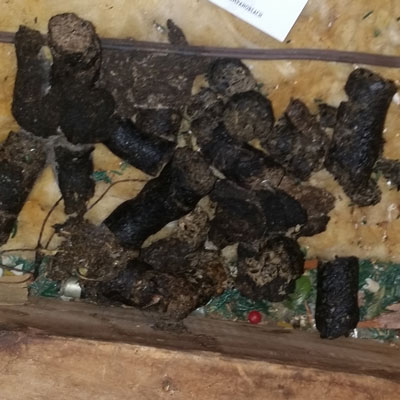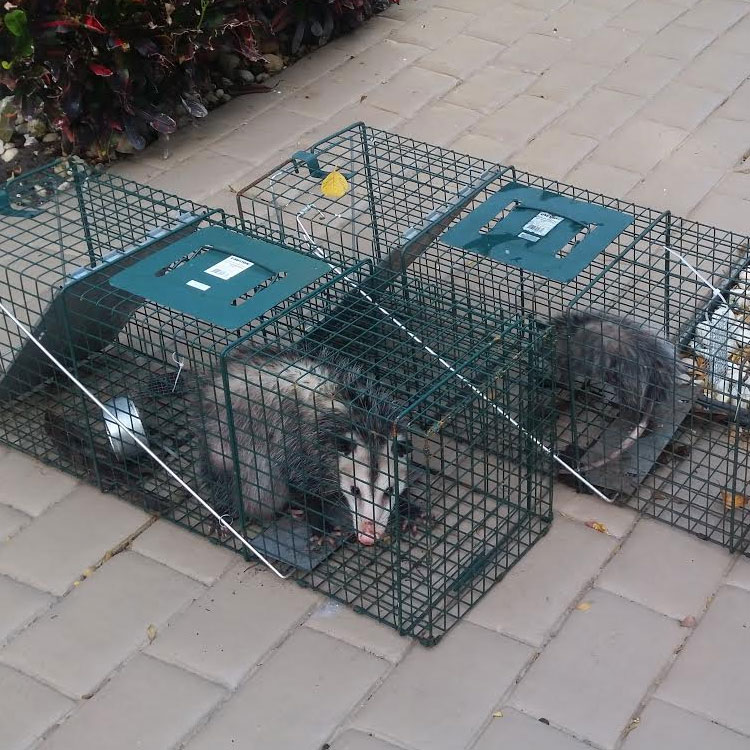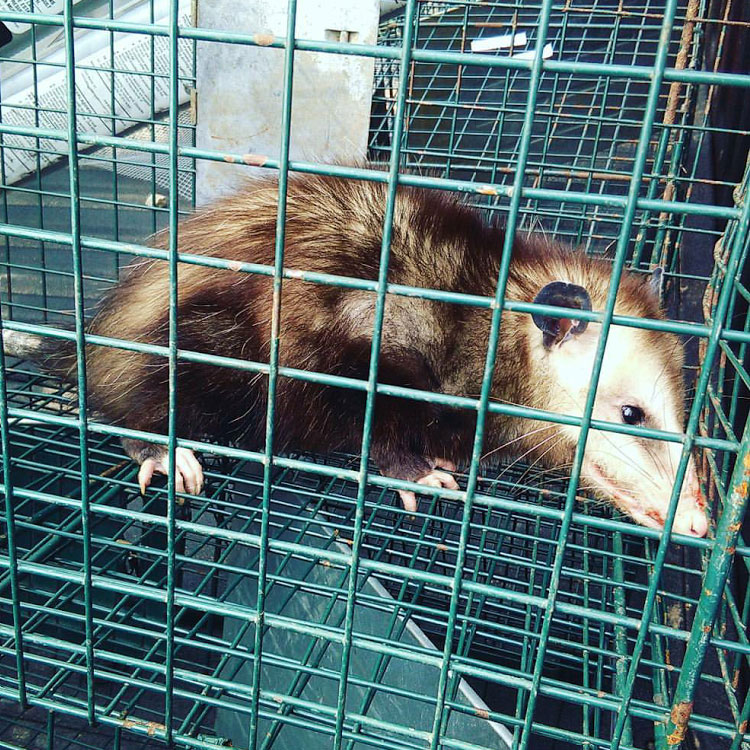Opossums in the Attic- Signs & Evidence!
It can be difficult to identify that you are having an opossum issue, as many of the signs of opossum activity are similar to other wildlife animals. However, there are some very common signs that you might come across on your property to let you know that you are dealing with an opossum. Many times, you can find trash cans or composts appearing as though they have been disturbed, this would be while the opossum was foraging through them for food. If you have chicken coops, it is also known that opossums will try to attack chickens or chicks and steal eggs for food. You can also look for opossum tracks around the areas as they are very distinct. The front paw will have five toes with visible claw marks, the back will have four toes up front and the opposable toe on the back.

Opossums can also find their way into your attic occasionally. Most often, this is a mother looking for a safe place to have and keep her babies. You can hear them moving around, mostly slow and scratchy sounding. Opossums are nocturnal animals, so the noises that come with having an opossum in the attic will often come at night. You can find signs of opossums in the attic by finding torn insulation with burrows in it. They will tunnel through the insulation, and often hide their babies in it. They are more likely to seek shelter in attics during the winter months, and then late spring and early summer to have their babies. Opossums are slow and somewhat clumsy animals, they often fall behind walls in the attic leaving behind a terrible odor.
Many times, opossums gain entrance through holes already in existence. Mostly near roof returns and through loose soffit. Often times, they are too big to gain access through small entry points – such as pipes. Opossums are known for their ability to climb well due to their opposable thumb on their rear foot, and can climb most walls with ease. Occasionally, they are known to gain access through vents as well.

They are known to use low hanging tree branches over roofs as kind of a stepping stone to getting onto the roof. They can climb trees to get to the branches and then use the branches to lower themselves onto the roof. This makes it easier for them to be able to get to the access points they need. Opossums are unable to jump, so the branches must be close enough to the roof that they can get onto it with ease. If an opossum is determined to get into your attic, they will, but the low hanging branches just make it easier for them.
It is common that the original roofers do not completely seal roof returns. Opossums are able to wiggle their way into the roof returns, which are a direct access to the attic space. Many times, these entry points can go unnoticed because they are hidden in corners and are typically very dark. You can often identify these as a main access point by locating rub marks, feces, or hair left at the opening.

Opossums also enjoy hiding under decks, or under mobile homes. Often, these areas are sealed off by a lattice, which can occasionally come loose due to age or weather. Opossums will use the loose areas in lattice to find access to under the deck, or home, where they are able to seek shelter in a dark environment, typically free of other animals.